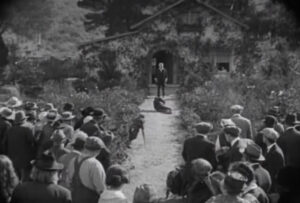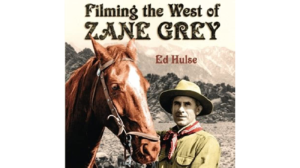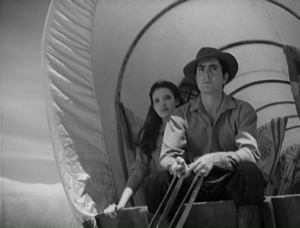
To deepen my knowledge of the silent era on the European continent, I created the European Silent Cinema Project. I review two European silent films each year starting in 1895 and ending in 1930. Visit the project’s main page for a comprehensive list of films and reviews.
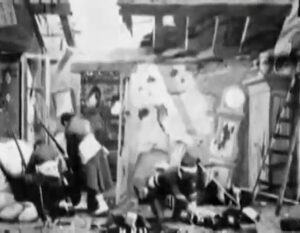
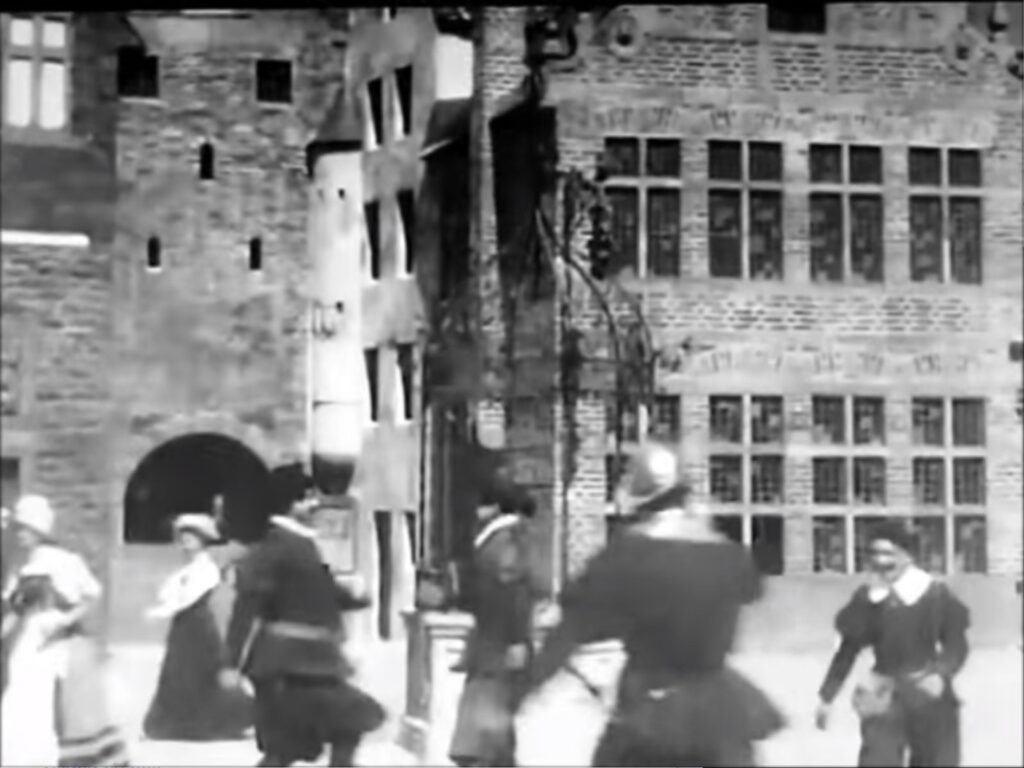
Film #1: The Last Cartridges (Les Dernires Cartouches)
Director: George Melies
Country: France
Film #2: Fight in Old Sweden (Slagsmål i gamla Stockholm)
Filmmakers: Alexander Promio & Ernest Florman
Country: Sweden
George Melies is widely known for his late 1890s and early 1900s fantasy films that utilize groundbreaking special effects. Chances are that if someone knows anything about the first years of cinema, they know Melies’ famous scene of a rocketship flying into the man on the moon. While many of his fantasy films continue to be entertaining to watch and remain a key identifying figure of early cinema, Melies’ other non-fantasy films are rarely discussed or viewed.
George Melies, who owned and performed magic shows at a Paris theater, first became aware of the new medium of film at the famous December 28, 1895 Lumiere brothers screening in Lyons. Melies was intent on installing a projector in his theater to use during shows. He was one of several people to offer the Lumiere brothers money for a cinematograph after the event but was turned down. He turned to England’s Robert W. Paul and bought an Animatograph projector along with a few films. He subsequently started incorporating films into his magic shows in April 1896.
After having reverse-engineered the Animatograph projector to create his own camera, George Melies started making his own films in May 1896 and screened them in his theater that August. Many of his films in 1896 were copies of Lumiere films and other contemporary films, filming street scenes, canals, and people doing everyday tasks such as playing cards or watering flowers. In 1897, Melies’ fifty-two films begin to include more elaborate special effects as many of his tropes and trademarks began to appear more frequently.
Two changes helped George Melies further develop his own screen style and become a trailblazer in cinematic arts and storytelling. First, Melies finished his very own studio early on in 1897, allowing him to more easily perform many of his stage tricks for the camera. Second, Melies took advantage of more sophisticated cameras hitting the market, ditching his own homemade camera for various equipment mass-produced by Pathe, Gaumont, and the Lumiere brothers. This freedom, mixed with almost a year of experience in front of and behind a camera, allowed Melies to innovate and create his very own screen style.
The Last Cartridges
His 1897 film The Last Cartridges shows how Melies was inspired by historical events and how he incorporated special effects to enhance his early films. The film is a recreation of an influential 1873 French painting of the same name painted by Alphonse-Marie-Adolphe de Neuville. The painting immortalizes a brave group of soldiers that fought until the last cartridge in the humiliating defeat at the hands of the German army in the Battle of Sedan during the Franco-Prussian War.
Although Melies’ film was made more than twenty years after France’s defeat to a newly unified Germany, French resentment towards and distrust of Germany was still very present in the 1890s. Melies’ portrayal of a famous military act of bravery in the Franco-Prussian War would have likely not only stirred up feelings of patriotism but would have also invoked feelings of loss, pain, and even anger.
Whether Melies made the film merely because he believed it would be a popular attraction or to incite patriotic fervor or political action is uncertain; however, George Melies and several other early filmmakers would regularly make films commenting on current affairs such as his 1899 series on the Dreyfus Affair.

The Last Cartridges (1873) by Alphonse-Marie-Adolphe de Neuville
The film itself utilizes a highly stylized decorated background that resembles the overall framing of the original painting. Melies’ audience would immediately understand where the events of the film took place from the title and the framing of the film. Although the camera remains stationary at a safe distance from the actors, there is plenty of movement and action throughout the film as soldiers rush back and forth.
Near the end of the film, Melies makes a slight jump cut to film an explosion, perhaps coming from a grenade. While later Melies would use this same effect for fantastical creatures to disappear into thin air, he stops the camera in an attempt to recreate a realistic explosion on the battlefield. The Last Cartridges shows Melies’ diverse body of work and his ability to use special effects for both fantastic and realistic special effects.
George Melies films an explosion immediately after a jarring cut.
As Melies continued to hone his skills as a cameraman throughout 1897, the number of similar cameramen (and the occasional camerawoman) learning and experimenting with cameras and film grew around the world. While the most well-known early filmmakers were in the United States, Great Britain, and France, other countries began producing films as various individuals gained access to film equipment and learned the craft from others.
In the case of Sweden’s first cinematographer Ernest Florman, he was trained by Alexandre Promio, one of the Lumiere brothers’ cameraman. Florman worked as a partner in his father’s photography studio and served as the Swedish royal photographer to Oskar II. Florman meet and worked with Promio when he visited Sweden to shoot and exhibit films at the General Art and Industrial Exposition of Stockholm held to celebrate Oskar II’s 25th anniversary of his coronation. The theme of the exhibition was fittingly new technological advancements.
According to the Swedish Film Database, a permanent exhibition at the fair, entitled Lumiere’s Cinematographer, featured films shot by Promio, including new shorts he shot during his time in Sweden. As Promio shot scenes of the king and other events at the exhibition, Florman assisted him and learned the tricks of the nascent moving picture trade.
Among the films that Florman would have assisted in making is a recreation of a skirmish between two men in medieval costumes. The camera is quite far away from the actors who are dwarfed by the buildings in the background. It is not certain whether the film was meant to capture a performance or event already being held at the exhibition or was a staged fictional narrative of a medieval fight. While definitely not the first instance of historical drama in film, this short film stands in stark contrast to many of the actualities being shot at this time.
Fight in Old Sweden
When the film was screened at the exhibition, a reviewer joyfully announced that “the cinematographer… has now managed to get some Swedish pictures too”. While Florman only made a few films after Promio’s departure before returning full-time to his work as a still photographer, such as this scene of King Oskar II greeting the King of Siam’s visiting Stockholm, this brief stint of Swedish film production encouraged others to open theaters and later make their own films.
Numa Peterson, involved in the screening of Promio’s and Florman’s films during the Stockholm exhibition, opened and operated one of the first Swedish cinemas in starting and late 1897. Peterson also sent out one of his employees to screen shows with a Lumiere Cinematograph in smaller, rural towns in Northern Sweden.
In 1897, the growing popularity and exposure of early film and the spread of mass-produced film equipment exposed more and more of the world to the new medium. While Melies in a country in the thick of the nascent film industry such as France was able to make more innovative films because of the appearance of mass-produced film equipment, Florman in a country on the periphery of the filmmaking world such as Sweden was able to plant the seeds of future film production by exposing many to the new technology and medium.
Throughout the rest of the decade and into the dawn of the 20th century, gradually more and more people would gain access to film technology in Europe, allowing filmmakers in all reaches of the continent began to shoot films of their own.
Previous—1896: Scenes of Rivers and Canals

